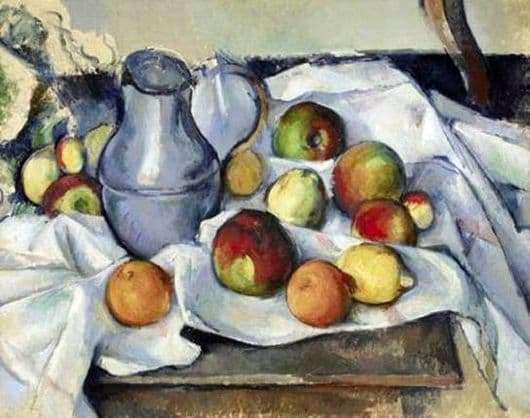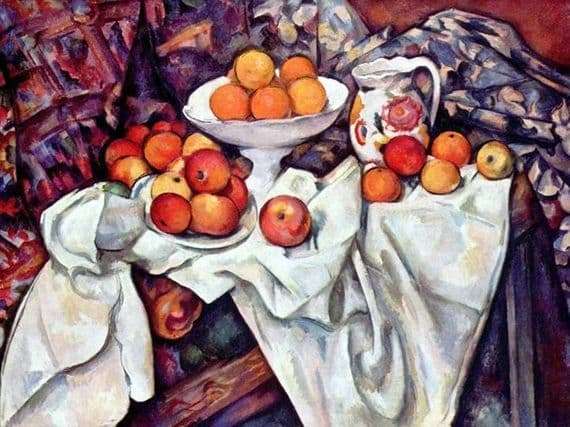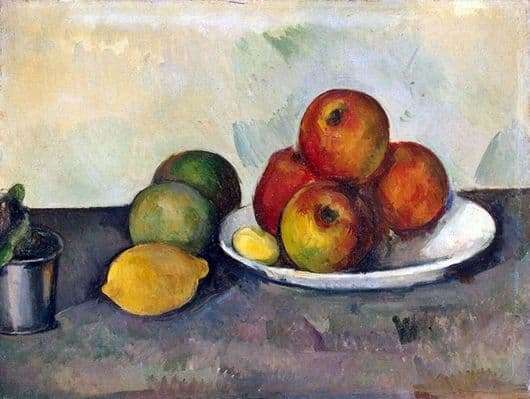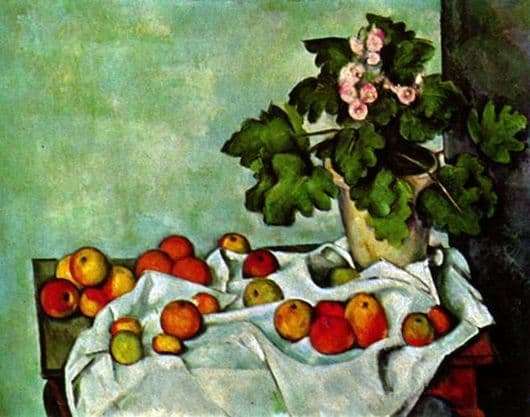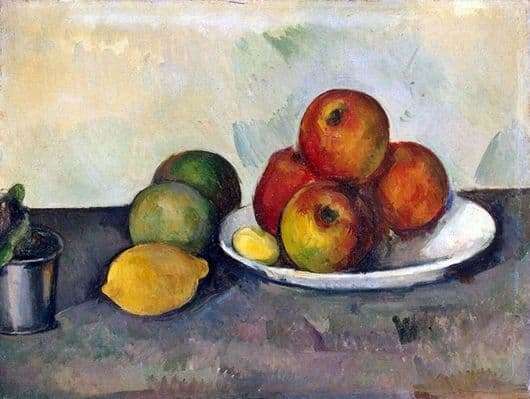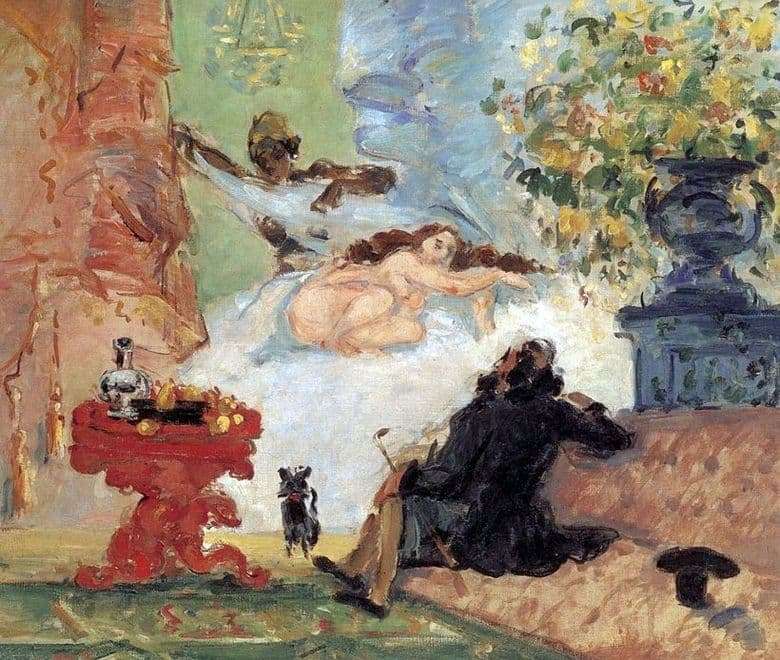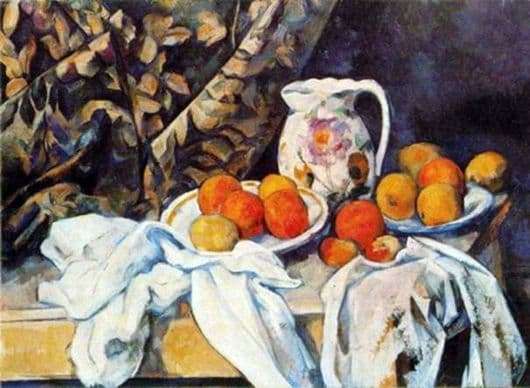
Paul Cezanne wrote the painting “Still Life with Drapery and Jug” in 1899. Experts attribute this still life to the style of cubism, which began to develop during these years. The canvas presents a variety of geometric shapes and objects. On a heavy, wide, sandy tabletop, we see a carelessly folded white cloth on which two flat plates of fruit lie. In the center of the composition, Cezanne wrote an amazing pitcher with a light floral ornament, contrasting with the general technique of writing the canvas.
On the left there is a heavy, dark draped fabric. The color spectrum is neutral and restrained, red, yellow and white colors dominate in the picture. Juicy warm colors and intermittent, broken strokes give the canvas a special dynamism. The artist seems to divide the picture into two sectors horizontally. The bottom is warm and juicy, and the top – as if clouded dark, cold cloth.
Thus, it is easy to follow the bright contrast of these two components of the canvas. The finest bends of the fabric are skillfully depicted, which makes the drawing technique as realistic as possible. Very carefully the author worked with the shadow and reflex tones. Each object casts almost elusive shadows. Shades of different objects are slightly mixed at the junction of their borders.
Thanks to this technique, the artist managed to portray the most subtle transitions of colors. If you look closely into the picture, you can feel the reality of the written ideal geometric shapes that seem to lie before us. The volume of the figures and cloths of cloth is accurately conveyed. Due to the slight distortion of objects by the shadows, one can feel their three-dimensionality. Master effortlessly works with visual effects,
Description of the painting by Paul Cezanne “Still Life with a Jug” (Still Life with Drapery)
